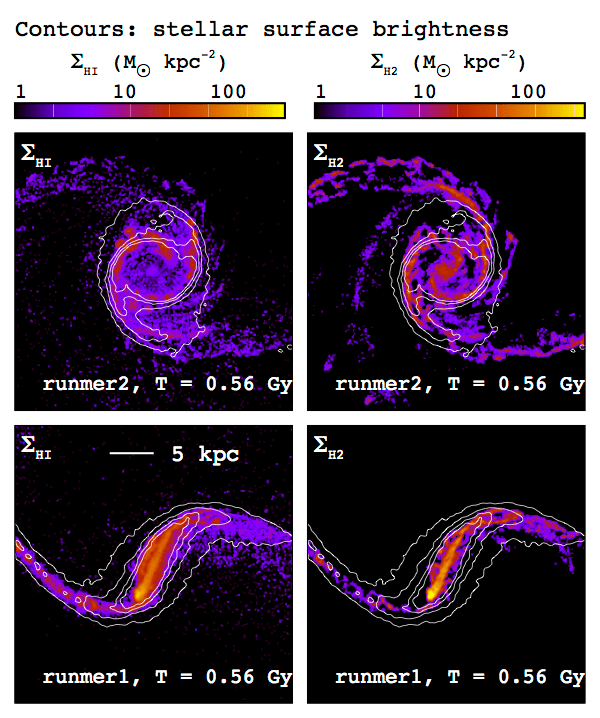Galaxies are living in different environments, such as small groups of galaxies (like our own Local Group, where Milky way exists), compact or loose groups, and clusters of galaxies. Physical properties of galaxies are observed to depend on their environments and their dependences are also different in the past and the present. It is theoretically unclear what drives galaxy evolution in different environments.
In this project, physical processes of galaxy evolution in different environments (e.g., galaxy merging and stripping) are investigated in detail by using numerical simulations of galaxy formation and evolution. New simulations include the formation and evolution of dust, dust-related physical effects (e.g., photo-electric heating), the formation of molecular hydrogen on dust grains, various types of feedback effects (e.g., supernovae), and chemical evolution in a fully self-consistent manner. Therefore, the simulations can predict not only stellar and gaseous properties, but also infrared (e.g., dust) and millimetre properties. The goal of this project is to understand (i) how environments influence mass-growth processes of galaxies and their star formation histories, (ii) how spiral galaxies are transformed into S0 galaxies and elliptical ones, (iii) how galaxy environments influence dust and gas contents, and (iv) how morphological types and mass functions of galaxies evolve with time in different environments (Figure below is the simulated HI and H2 distributions of disk galaxies in groups).
